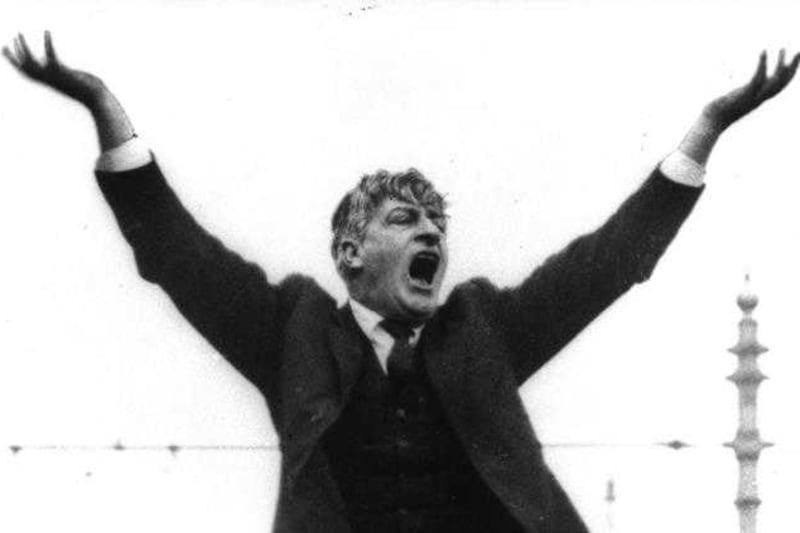IT’S safe to say that Jim Larkin was born in Liverpool. A birth certificate says so, and Fred Bowers, his boyhood best-friend knew him as "a tall, raw-boned Liverpool-born son of an Irishman".
Yet Big Jim always insisted that he was born with the McNultys in the maternal family homestead in Tamnaharry, near Burren, south Down. Another story has him born in Liverpool but raised near Newry until he was ready to return to Liverpool to go to school.
The Ulster nativity was very important for Larkin, possibly because he was conscious of his Liverpool accent and felt vulnerable to being accused, as he often was, of being an imported English agitator. Ulster would also play an important part in his life.
In 1905 Larkin became an agent of the Liverpool-based National Union of Dock Labourers, which was known in England as ‘the Irish union’. In January 1907 he was sent to Belfast to attempt the reorganisation of Irish ports.
Larkinism in Ireland began with the Belfast dock strike in the summer of 1907. The strike itself was a remarkable fight by unskilled, easily replaced men. But what made it astonishing was that the RIC mutinied and joined the strikers. Alarmed, the government rushed troops into the city and directed warships into Belfast Lough. By the end of the summer, Larkin was a household name throughout the UK. Larkin’s union too was alarmed, and negotiated a weak settlement to end the trouble.
The setback in Belfast led Larkin to move to Dublin, and he is now indelibly associated with the city, its slums, the 1913 lockout, and the Irish Transport and General Workers’ Union. His republicanism is less well known, though it’s very evident from his writing.
He was also an enthusiast for the ‘Irish Ireland’ movement, called for Irish workers to join Irish trade unions and took to using his few words of Irish where possible. "As an Ulsterman", as he claimed, he was outraged by partition, and denounced the Anglo-Irish treaty in 1921.
By this stage Larkin was in America. Worn out after the lockout, he had gone to New York in October 1914, and was arrested for ‘criminal anarchy’ during the red scare in November 1919. J Edgar Hoover, a rising star in what became the FBI, took a keen interest in the case.
As the trial was proceeding, he acquired a copy of WP Ryan’s history The Irish Labour Movement from the 'Twenties to Our Own Day. Ryan was a huge admirer of Larkin, and Hoover could not have been reassured by his mythologisation of the great man as "transhuman, colossal, legendary".
Ryan also claimed that Larkin had been "born in the neighbourhood of Newry" and "taken to England in his infancy". Hoover sent New York state prosecutor Alexander Rorke a copy of the book with the suggestion he read the pages on Larkin. He also asked Rorke to note that Larkin was "born in Ireland and taken to New York in his infancy". This is, perhaps, the only time that New York has been confused with Newry.
Larkin was found guilty and sent to Sing Sing (slang for Ossining prison) in May 1920. Released in January 1923, he activated the Ulster Defense Alliance and planned to sail to Ireland with a food ship carrying provisions for victims of loyalist pogroms.
The project came to nothing and, after much effort, Hoover finally got him deported to Southampton in April. The Northern Ireland government immediately banned him from setting foot in any of the six counties.
:: Emmet O’Connor is a historian at the University of Ulster Coleraine and is the author of Big Jim Larkin: Hero or Wrecker?, published by UCD Press.




